Brenda Greene - The father of PUBG game: From unemployed, fluffy "sticking" to her parents to a millionaire

5 | 0 Discuss | Share
She devoted all her mind, enthusiasm and life to the cause of science
Marie Curie is a French physicist and chemist of Polish origin, known worldwide for her research on radioactive substances. She is the first and only woman in the world to receive the Nobel Prize twice in two different fields. Marie Curie's life is a magical story, with many great stories.
She devoted all her mind, enthusiasm and life to the cause of science. She is the author of a famous manifesto: "In science, it is important to invent something, not the researcher himself".
Poor girl passionate about science
Marie Curie, was born on November 17, 1867 in Warsaw, Poland. From a young age, he showed his intelligence more than people and did not falter before any difficulties and challenges to come to the vast, mysterious and interesting world of science. Since the Polish government at that time did not admit women to university, Marie Sklodowska had to study at the "Roving University" set up by some secret patriotic intellectuals in Poland.
Marya's family life was less pleasant, and the national situation was no better. Around 1872, when Marya was five years old, her Poland was torn apart by three empires: Russia, Germany, and Austria. Her homeland was in the Tsar's sphere of influence. After the people's revolution failed in 1831, King Nicolas of Poland, under the tug of Russia, directly suppressed the patriotic revolutionary elements: imprisonment, exile, confiscation of property.. In addition, the government also deliberately applied a very inhumane educational policy: the policy of stupidity. At that time, science and philosophy began to develop very strongly in Europe, but the ideas of Auguste Comte, Darwin, the inventions of Pasteur, Faraday... could not enter Poland.
To pay for school, Marie had to tutor a wealthy landowner in the area. After 5 years as a tutor, at the age of 24, thanks to the help of her eldest sister Marie, she was able to go to Paris to study at the Sorbonne - a prestigious university that values intellectuals and talents, and respects those who have higher education. Here, Marie devoted all her time and energy to study and scientific research.
Only a short time after arriving in Paris, thanks to her extraordinary efforts, Marie quickly became one of the best students of the Sorbonne. While still a third year student Marie was awarded a Master's degree in Physics and in the fourth year was awarded a Master's degree in Arithmetic. In addition, Marie also speaks and writes fluently in French, Russian, English, German and is determined to do a PhD thesis in Physics.
Marie's college tuition mainly depends on the money saved during 5 years as a tutor. She had no money to hire a maid, no money to buy meat, sometimes for weeks at a time, she only ate bread and tea, occasionally eating a few eggs, a chocolate bar or an apple. The austere living caused Marie to become anemic, or faint. She also did not have time to think about love and marriage.
But on the bumpy and thorny road to conquer the top of science, Marie klodowska met and married a famous French scientist: Pierre Curie.
Fateful marriage creates a turning point in life
Love with Pierre Curie is the second love in the life of Marie Sklodowska. At the age of 19, while working as a tutor, Marie had a poetic first love with the owner's son.
On summer vacation, Casimir - the son of the owner, a student, returned home from the capital, fell in love with the tutor with smooth white skin, golden hair, big eyes, intelligence, and charm. She is also good at dancing, sailing, skiing, polite gestures, and has a gift for literature. The two fell deeply in love and discussed marriage. But their love is not accepted by the boy's parents.
In addition, on the part of Casimir, due to his timid, impulsive nature, obediently obeyed his parents, he immediately abandoned Marie and returned to the university. The end of her brief first love gave Marie a shock to the point of death. Luckily my best friend arrived in time.
The heavy memories of the first love plus the busyness of studying and scientific research, Marie barely had the mind to think about love. But as a compensation, science has given her a good man, the right mind.
At the beginning of 1894. Marie accepted an invitation from the French Chamber of Commerce to study the magnetism of steels. Marie has to ask for the help of a physics professor of Polish origin. This professor introduced Marie to Pierre Curie - Laboratory Head of the Paris School of Physics. Pierre Curie was then 35 years old, unmarried, famous for his inventions about the phenomenon of voltage, the balance and the law of magnetism named Curie. This talented physicist also has the soul of an artist, also writes and writes poetry, loves music, is passionate about science.
Just a few months after meeting, Marie and Pierre fell in love and quickly got married. Their wedding ceremony was very simple, no wedding rings, wedding parties, no religious ceremonies. They cycled to the countryside for their honeymoon. Even on their honeymoon, they talk a lot about ideals, work, and experiments.
Two years after the wedding, Marie Curie gave birth to her first daughter and was about to defend her doctorate in physics. She chose the radioactive phenomenon of the element Uranium as a research topic. It took a long time for the couple Pierre Curie to borrow a damp cellar for a laboratory. With thousands of calculations and measurements.
Twenty years later, the Curies discovered a new radioactive element that is 400 times more radioactive than pure uranium. She used the name of the Polish Motherland to name the element: Polonium. Not long after, the couple discovered another element with extremely strong radioactive intensity, which is Radi. Because refining radium from the Pechbelgian ore was difficult and expensive, the Curies were determined to find a way to invent.
After four years and thousands of experiments, Curie and his wife successfully practiced Radi. For this success, in 1903. The Royal Academy of Sciences London awarded them the Devy Medal and a month later the Swedish Academy of Sciences awarded two people the Nobel Prize in Physics. The University of Paris awarded Marie Curie the title of Outstanding Doctor of Physical Sciences.
Recalling that time, Marie Curie said:
"After returning home from the laboratory, our minds still lingered on the strange phenomenon in the laboratory. I asked Curie to come back. As soon as we opened the door, we were both stunned by the radium salt in the jar. emitting blue fluorescence that sparkled like stars in the night sky We hugged each other, tears of joy in our eyes.
For nearly 4 long years, we had no money, no one to help us, but I can say without exaggeration that those years were the most heroic and happiest period of our lives. our couple...".
In 1906, a disaster suddenly descended on Marie Curie's life. On the way to the Academy of Sciences, Pierre got into a traffic accident and died. Marie Curie not only lost a loving husband, but also lost a comrade-in-arms, a firm support on the way to the pinnacle of science.
A year later, Marie Curie was accepted as a professor to replace her husband at the University and became the first female professor at the University of Paris. With extraordinary energy, having to raise two children alone, and undertake teaching and scientific research, in 1911 Marie Curie once again received the Nobel Prize in Chemistry. The French government decided to award her the Order of the Legion of Honor.
Be the first to discover radioactive elements
Marie Curie dedicated herself to science bravely and impartially. After the appearance of Radi, it was discovered that its radioactive rays can penetrate the body, destroying pathological cells, so Radi becomes an effective weapon against cancer. Investors from all over the world competed to pay high prices to buy her method of refining Radi. Someone advised her to monopolize manipulation. But she is not greedy. She believes that scientific invention is to pursue happiness for mankind, not for personal gain. So she announced to the world the method of refining Radi.
In 1914, she was appointed Director of the Radi Institute in Paris. This is the first facility that uses Radi to treat cancer. During World War I, Marie Curie and her daughter Iren tried to apply Radi rays to save people.
In 1921, Marie Curie, as Director of the Radi Institute, and her daughter Iren visited the United States. The President of the United States gave her a gram of Radi. She asked to specify in the deed that it was a gift to her to conduct scientific research and not for private property.
In 1922, she was elected a member of the French Academy of Medicine. In the same year, the League of Nations International Committee for Intellectual Cooperation in Geneva elected her as its Vice President. She dedicated her life to science.
Radiation also gives the ability to detect and cure some diseases. Thanks to X-ray therapy, it is possible to kill some cancer cells by "bombarding" it with bombs, that is, by emitting cobalt radiations at diseased cells.
By the 1920s and 1930s, people began to better understand the toxic effects of radiation on the human body. The scientists who worked with the Curies in the early days of the invention all suffered from the symptoms caused by radiation such as gastrointestinal discomfort, burning, ulcers, cancer ...
On July 14, 1934, Marie Curie died. Doctors said she was poisoned with radium. Due to long-term radiation, her internal organs were severely damaged. Her body was interred in the suburbs of Paris, next to Pie Curie.
To remember the great contribution of this outstanding female scientist in the study of radioactive elements, the unit of radioactivity intensity is called "Curie"! Marie Curie died the same year her daughter and son-in-law Iren Jolit Curie and Federic were awarded the Nobel Prize in Chemistry.
Following in the mother's footsteps - 2 Nobel Prizes
According to the British Royal Society of Chemistry, Irène Curie was born in 1897 in Paris as the first child of Marie Curie and Pierre Curie. Born into a family with a "tradition" of science, Irène Curie quickly developed the ability to think and nurtured a passion for chemistry from a young age.
After graduating from high school, she applied for a job as an assistant to her mother at the Institute of Radium Addiction in Paris. In 1925, the mother-daughter research group was joined by graduate student Frédéric Joliot from the Collège de France. Irène Curie and Frédéric Joliot fell in love and became husband and wife.
Since then, the two have researched together on natural radioactivity, artificial radioactivity, and nuclear physics. Their discovery of the collision of neutrons into the nuclei of heavy elements was the basis for neighboring scientists to find the nuclear fission reaction.
In 1935, the couple won the Nobel Prize in Chemistry for their work on artificial emissions - a continuation of their mother's work on naturally occurring radioactive elements.
This all-time famous scientist proves that a successful person does not need a modern laboratory, a large studio or state-of-the-art equipment. All they need is a curiosity for new things, a clear purpose, unwavering dedication and best of all, a companion towards the best in their work.
Albert Einstein - A genius of physics who was ruthless with his wife and children, his "brain" was stolen by a doctor when he died 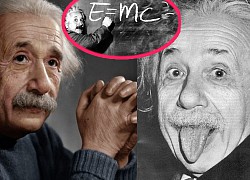 team youtube15:15:21 24/05/2021Albert Einstein was born on March 14, 1879, died on April 18, 1955. He was a physicist. German theoretical theorist, recognized as one of the greatest physicists of all time. During his whole life devoted to physics, he owned many achievements (including the Nobel Prize in Physics in 1921), along with the number
team youtube15:15:21 24/05/2021Albert Einstein was born on March 14, 1879, died on April 18, 1955. He was a physicist. German theoretical theorist, recognized as one of the greatest physicists of all time. During his whole life devoted to physics, he owned many achievements (including the Nobel Prize in Physics in 1921), along with the number

5 | 0 Discuss | Share
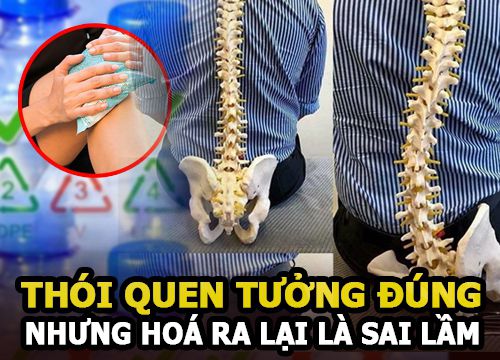
6 | 0 Discuss | Share

3 | 0 Discuss | Share

3 | 0 Discuss | Share


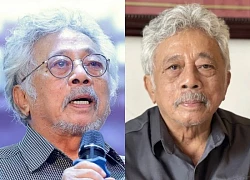


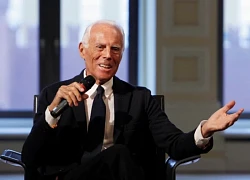
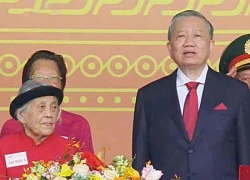
1 | 0 Discuss | Report